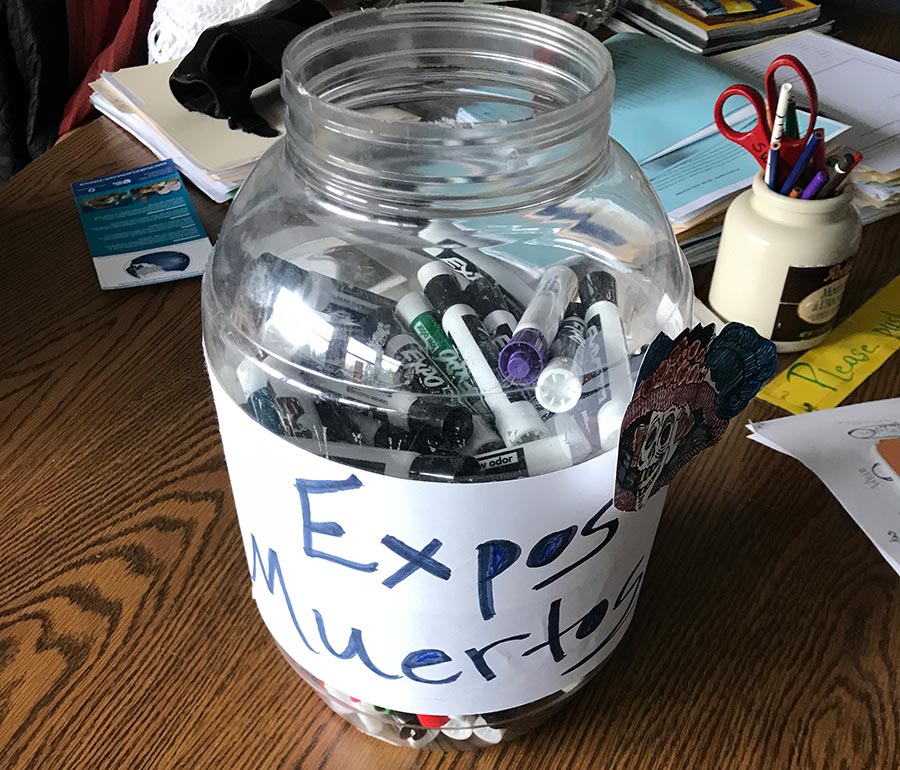As many are realizing, discarded plastic is to the earth, its animals and its oceans what kryptonite was to Superman: super toxic.
As environmental advocates press for a change in habits, International Plastic Bag Free Day (Wednesday, July 3, 2019) aims to sound the alarm about the harm that plastic is causing, and to convey the urgency to start using alternative products.
In schools – the very place for inquiry – the subject of plastics is explored in green clubs, science classes, and in other parts of the curriculum. And deep in the Adirondack forest, students in Newcomb — one of the smallest districts in the state — are learning about how plastic can harm life through a “sanctuary model” of teaching that includes social responsibility.
Newcomb Spanish teacher Martha Swan and her students began examining plastics problems several years ago as part of their study of marine sanctuaries. They learned vocabulary, studied habitats and ways to protect marine life, went on a whale watch and visited the Lake Champlain Maritime Museum. They also used recycled materials to make coral reefs in art class.

Most dry erase markers do not last as long as old-fashioned chalk and are made with plastic and toxic materials. There are refillable, nontoxic alternatives.
One creation depicted a dying reef in muted colors, with plastics and garbage attached to it. Plastic kills the food cycle. Animals can choke and die on plastic bags. Recently, a whale made international news after dying from swallowing an astounding 88 pounds of plastic.
According to the National Oceanographic and Atmospheric Administration, scientists believe that about 8 million metric tons of plastic – equivalent to 90 aircraft carriers – ends up in the ocean every year. Fishing nets and discarded fishing equipment also account for some of the oceanic crud.
The Newcomb students, who also take part in a town-wide cleanup day, do research and report – in Spanish – on ecological concerns worldwide. Students also read “The Great Garbage Patch” about the swirling hefty hunk of plastic in the Pacific Ocean three times the size of France.
“For so many of us, plastic just seems inevitable,” said Swan, who had students interview older residents about their use of plastic items such as bags, water bottles or laundry baskets.
“The kids came to the realization that there are alternatives, as they queried their elders,” she said. One parent brought in a reusable shopping bag made from an old T-shirt to demonstrate an alternative to plastic.
Helping students connect to the world around them and things they care about is a teaching tool Swan uses emphatically.
“What students are learning actually matters,” she said.
Swan networks with teaching colleagues using similar methods. For the marine sanctuaries project, she met with Saranac Lake Teachers Association members Gemini Randolph and Zach Randolph; along with Paul Hai, a member of the United University Professions chapter at the nearby Newcomb campus of SUNY Environmental Science and Forestry (See related article on page 13 of NYSUT United July/August 2018.)
Many of these North Country students attend the annual Youth Climate Summit in nearby Tupper Lake to learn how to develop climate action plans.
Swan, who is also the founder and executive director of the not-for-profit John Brown Lives! — an organization that supports human rights and social justice issues and is named in honor of abolitionist John Brown — has devoted her life to making change.
“Preservation and conservation,” she said, “are really important to me.”
Ditch the plastics
According to the non-profit Earth Day, about 4 trillion plastic bags are used worldwide annually. Only 1 percent are returned for recycling. Americans throw away 100 billion plastic bags annually. That’s about 307 bags per person.
What you can do: Switch to reusable shopping bags.
Single-use-plastics frequently do not make it to a landfill. A full 32 percent of the 78 million tons of plastic packaging produced annually is left to flow into our oceans, the equivalent of pouring one garbage truck of plastic into the ocean every minute. This is expected to increase to two garbage trucks per minute by 2030, and four per minute by 2050. By then, this could mean there will be more plastic than fish in the world’s oceans.
What you can do: Buy products with less packaging or no packaging.
Humans buy about 1,000,000 plastic bottles per minute.
What you can do: Use reusable drinking containers such as glass, stainless steel and aluminum.